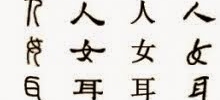
In a recent publication, co-authored with two other Pitt researchers, Yi Xu reported the result of an investigation of comparative effectiveness of reading, animation, and writing in developing students’ orthographic knowledge of Chinese.
The research found that for students who have previously studied the Chinese orthography the three learning conditions helped them in different ways: Writing and animation both led to better form recognition, while reading produced superior meaning and sound recalls.
In addition, the effect of animation in remembering meaning was also better than writing. In developing the skill of reproducing characters from memory, writing was superior. These results inform Chinese pedagogy for teaching reading. View the results.
The article, entitled "Reading, writing, and animation in character learning in Chinese as a foreign language," appeared in the September 2013 issue of Foreign Language Annals. In a recent publication, co-authored with two other Pitt researchers, Yi Xu reported the result of an investigation of comparative effectiveness of reading, animation, and writing in developing students’ orthographic knowledge of Chinese.
The research found that for students who have previously studied the Chinese orthography the three learning conditions helped them in different ways: Writing and animation both led to better form recognition, while reading produced superior meaning and sound recalls.
In addition, the effect of animation in remembering meaning was also better than writing. In developing the skill of reproducing characters from memory, writing was superior. These results inform Chinese pedagogy for teaching reading. View the results. The article, "Reading, writing, and animation in character learning in Chinese as a foreign language," appeared in the September 2013 issue of Foreign Language Annals.